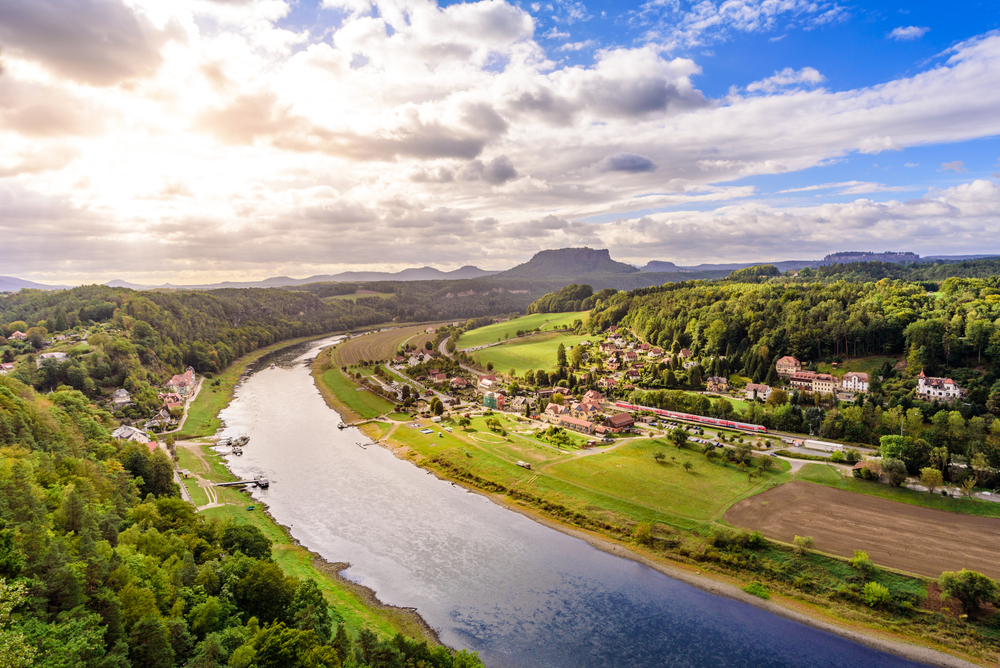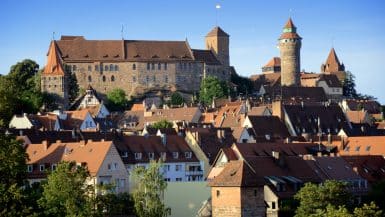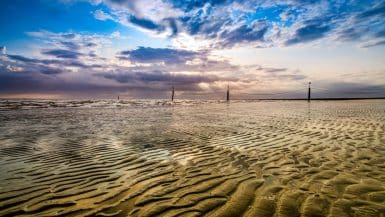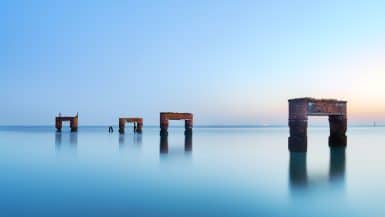Saxon Switzerland is part of the Elbe Sandstone Mountains. The rugged rocky landscape lies southeast of Dresden, connects to the Eastern Ore Mountains and stretches all the way to the Czech Republic. The Czech part of the Elbe Sandstone Mountains is called Bohemian Switzerland.
Saxon Switzerland National Park – a paradise for hikers and adventurers
The Saxon Switzerland National Park is known as one of the most spectacular hiking areas in Europe. The accessible wilderness has an extensive network of trails and trails where nature lovers and adventurers can walk for several days. The trails, whose origins date back to the eighteenth century, are divided into different levels of difficulty and length. In this way, every visitor finds his or her own individual path.
There are paths that disappear between rock formations, seemingly endless stone stairs that scouts once built to open up the area to tourists and nature lovers. Bizarre rock formations, like giant fingers, grew into the sky, wind, weather and other forces of nature smoothed them out. Water cut deep valleys into the rock faces, erosion filed the stones round. The result is a landscape that is second to none. So many different shapes in a very small space can only be found in a Tetris game. The hiker is rewarded by far-reaching panoramic views, the beauty of which captivates the viewer.
The Malerweg winds its way through the park for 112 kilometres and is considered one of the most beautiful hiking trails in Germany. In eight daily stages, it is possible to make a pilgrimage along the entire route. A dense network of overnight accommodation and resting places for hikers completes the offer to explore the national park.
Sights, castles and palaces
Characteristic of Saxon Switzerland is the colourful mix of attractions worth seeing. Untouched nature, bizarre rock formations and imposing buildings form a varied world of experience.
The Bastei
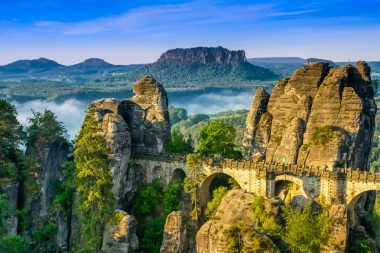
The Bastei is one of the most famous rock formations in Saxon Switzerland. It is considered the most popular excursion destination in the region and is the starting point of most visitors and hikers’ adventures. A bridge of 76.5 metres in length runs through the rugged Elbe sandstones. It offers amazing views of well-known rock formations, for example the Lilienstein or the Königstein. The bridge serves as access to the well-known ruins of the Neurathen Castle. It is one of the largest medieval fortresses that its builders carved into the stone.
The Polenz Valley
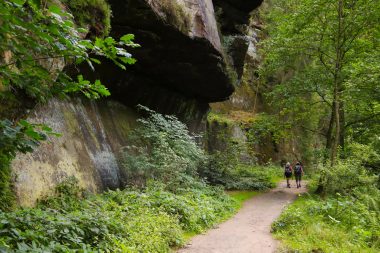
A canyon in Saxony? The valley of the Polenz, headstream of the salmon stream, pushes through the untouched nature. The water meanders along its course in many loops. The narrow and deep valley, in which the Polenz propels its cool water, shows the typical V-like section towards the riverbed.
Near the village of Neustadt, which is not far from the course of the Polenz, there is a popular destination for hikers: the Gautschgrotte. The grotto is framed by 18-meter-high rocks. In cold seasons, a natural spectacle can be admired there. Water from thawing snow drips from the overhanging rock face and conjures up huge stalactites of ice around the natural cave.
Both excursion destinations, the canyon of Saxony and the Gautschgrotte, can be connected with each other.
Königstein Fortress
Königstein Fortress is known far beyond the borders. It captivates countless visitors every year. The castle was considered one of the safest facilities of its time. Electors and dukes sought shelter within the walls of the mountain fortress. In the course of history, the complex served as a prison, as a military hospital, and experienced lavish parties in happier days.
> Information on opening hours and admission prices
Baroque Garden Großsedlitz
Augustus the Strong once walked with his entourage through this garden, which resembles Sansoucci Park in Potsdam . Extensive horticultural art characterises the picture. Staircases, water features, sandstone figures and decorative vases impress the eye of the beholder. The basic form of the baroque garden was created between 1719 and 1732. It has been preserved in its original arrangement to this day.
Baroque Rammenau Castle
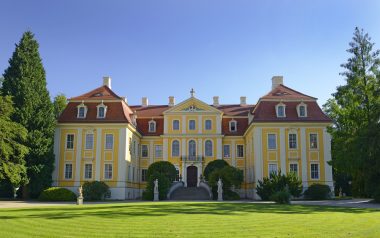
The former summer residence of several noble families is now one of the most beautiful baroque castles. It houses a museum in which pieces of equipment from the 18. and 19th century. Artistic murals and stylish salons leave a lasting impression.
Stolpen Castle
The fate of Countess Constantia von Cosel is closely linked to Stolpen Castle, which was built on an extinct volcano. After falling out of favor with Augustus the Strong, she spent 49 years in captivity. No one before her or after her lived so long in this castle. Today, the fate of Countess Cosel can be traced on the basis of exhibits.
> Information on opening hours and admission prices
Weesenstein Castle
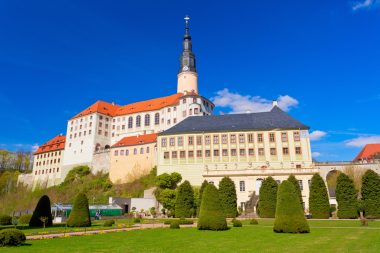
Weesenstein Castle is something special. It seems illogical: the ballroom is located under the attic, and horse stables are at home on the fifth floor. The history of the castle explains a lot. Seven hundred years were built, demolished, redesigned and old ones preserved. The unusual thing is the way the castle was created. From top to bottom, it was added, discarded and reconstructed, always around the mountain on which the construction began.
>Entrance fees and visiting hours
Hohenstein Castle
Hohenstein Castle rises on a rocky spur in the immediate vicinity of the Polenz Valley. The fortress was first mentioned in 1353. The eventful history tells of its use as an aristocratic residence, as a state prison and as a hunting lodge. Later, Germany’s largest youth hostel was located within these walls.
Pirna-Zuschendorf Castle
The Pirna-Zuschendorf Castle is particularly popular with plant lovers. The palace garden houses the most important camellia collection in Germany, hundreds of bonsai trees, azaleas and hydrangeas. A tour of the park of the country castle invites you to marvel and admire.
> Information on opening hours and admission prices
Kuckuckstein Castle
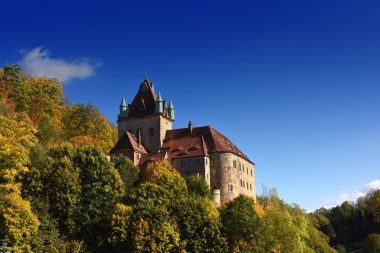
The old Kuckuckstein Castle was built under Henry I as a border fortress on a picturesque rocky outcrop above the Seidewitz river valley. Among other things, the museum contains exhibits that tell of the time when the castle served as a meeting place for Freemasons. The high level of awareness of the property was ensured by GDR television. From here, the program “Magic at Kuckuckstein Castle” was broadcast. The historic castle park is one of the few surviving Saxon hillside gardens.
Saxon Switzerland – a holiday paradise
Saxon Switzerland has individual options for every visitor to organise their holiday. Castles and palaces offer the pilgrim interested in history the means to discover new things. Nature lovers and adventurers enjoy the untouched nature in the Saxon Switzerland National Park.

